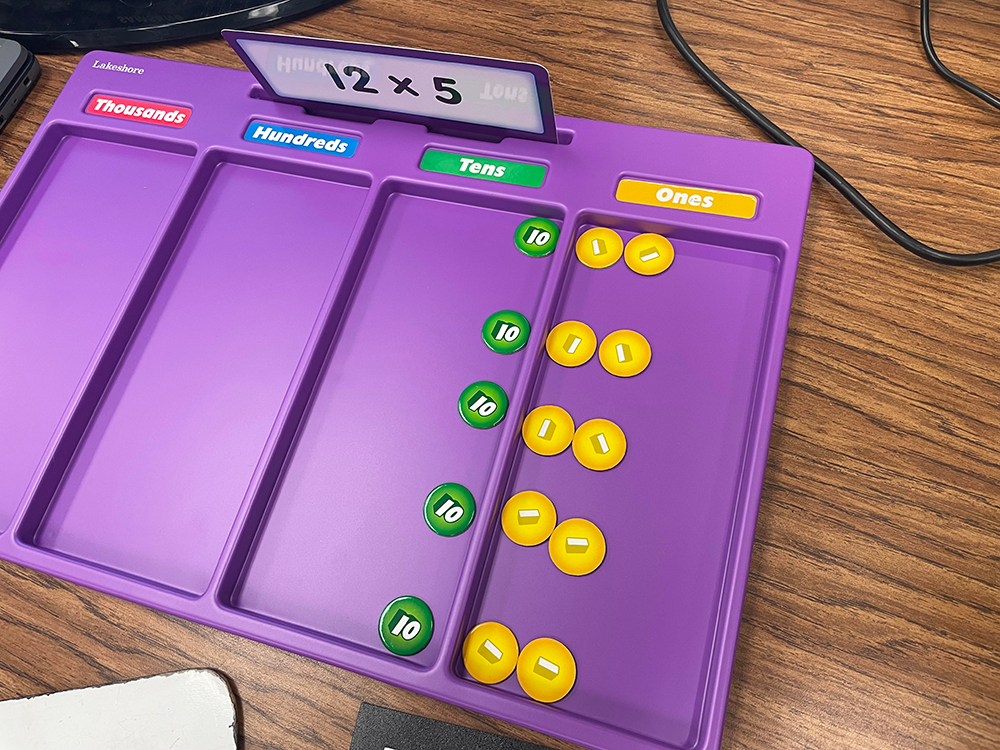Artifacts: Assessment Data from EDUC 425 Case Study & iReady Assessment Results.



Highlights
- - MAP, iReady, Lexia and Moby MAX Assessments
- - WoodCock Johnson IV
- - EasyCBM and San Diego Quick Assessments
- - Team Quizes, Flipgrid and authentic assessments
Description for CSTP 5: Assessing Students for Learning.
Element 5.1 - Applying knowledge of the purposes, characteristics, and uses of different types of assessments; Element 5.2 - Collecting and analyzing assessment data from a variety of sources to inform instruction; Element 5.3 - Reviewing data, both individually and with collegues, to monitor student learning; Element 5.4 - Using assessment data to estabilish learning goals and to plan, differentiate, and modify instruction; Element 5.5- Involving all students in self-assessment, goal setting, and monitoring progress; Element 5.6 - Using available technologies to assist in assessment, analysis, and communication of student learning; Element 5.7 - Using assessment information to share timely and comprehensible feedback with students and their families.
Element 5.1 Evidence
I have used/prepared informal assessment tools for screening such as EasyCBM, phonics survey, San Diego Quick, and Dibels to assign lessons/books; I conduct the WoodCock Johnson formal test for comprehensive data and use that data to write baseline data for IEP goals; I design rubrics and teacher-made informal assessments; I use other informal assessments such as iReady and Ekwall Shanker Reading assessments to determine the student's present level of performance and IEP goals.
VIEW PICTURE
Artifacts: Picture of San Diego Quick.
Element 5.2 Evidence
I use screening assessments such as Dibels and San Diego Quick for baseline data; I use teacher-made tests for IEP goals and baseline data; I progress monitor using anecdotal notes and data worksheets; I use student and instructional aide interviews to determine progress benchmarks and gauge students' prior knowledge, and modify instruction; I use teacher interviews in person and through Microsoft forms for data to be used to determine PLOP.
VIEW PICTURE
Artifacts: Picture of San Diego Quick.
Element 5.3 Evidence
I collect data from various sources (i.e., teacher-made forms, tests/assessments, both informal and formal). However, there has been limited collaboration from general education teachers for producing inclusive lesson plans due to them needing more training in inclusion and an apparent lack of time from them; I have researched and reviewed past progress for IEPs and through school files (i.e., gen ed records and CUM).
VIEW PICTURE
Artifacts: Picture of WoodCock Johnson IV.
Element 5.4 Evidence
I use a variety of assessments (i.e., WCJ, CBM probes, Dibels) to set learning and IEP goals; I would target grade-level standards and use assessment data to modify the goal/meet the student's needs; I use assessment data (i.e., observations, informal and formal) and student interviews to adjust instruction.
VIEW PICTURE
Artifacts: Picture of Student Goals Area and Student Goals Folder.
Element 5.5 Evidence
I conduct IEP goal assessment sessions at least once a month to address their progress and assess their goals or suggest new goals; I model/scaffold with time to reflect; My learning targets and success criteria are shown in the classroom, discussed with the students and referred before, during, and after instructions.
VIEW PICTURE
Artifacts: Snapshots of MAP asessments results.
VIEW PICTURE
Artifacts: Picture of Realia and Manipulatives Used.
Element 5.6 Evidence
I use and design/implement various technologies: hand-made, authoring tools, or 3rd party applications (i.e., Kahoot!, Nearpod, whiteboard.fi, Microsoft Teams & Forms, PowerPoint, etc.); Analysis of assessments that have been used include MAPs, ELPAC and iReady; Low to no-technology has been used in the classroom for lessons which include realia, manipulatives, printed worksheets, and paper packets.
Element 5.7 Evidence
During an IEP meeting, I provide a comprehensive overview of key areas of assessment and provide opportunities to raise questions. Due to COVID and online environments- some IEP meetings have been a challenge to keep up with digitalizing work for display; There is an average range of two-way communication from the general education teachers regarding them sharing their lesson plans and other data about student progress; There have been communication/conferences with parents.
VIEW PICTURE
Artifacts: Picture of Student Profile for IEP Meetings.












